Prozac dosages: 20 mg, 10 mg
Prozac packs: 30 pills, 60 pills, 120 pills, 240 pills, 300 pills, 90 pills, 180 pills, 270 pills, 360 pills

Purchase cheap prozac
Percussion Percussion over regular air-filled lung produces a resonant observe, whereas percussion over stable organs, such as the liver or coronary heart, produces a boring observe. The resting finger must be positioned flat in opposition to the chest wall in an intercostal house (tip: focus on getting the center phalanx, somewhat than the entire finger, flat in opposition to the chest). The percussing finger should strike the dorsal surface of the center phalanx and must be lifted clear after each percussion stroke. The order should enable immediate comparability of one space with the equal area on the alternative facet. To recognize a selected notice as hyper-resonant takes years of follow and a well-tuned ear. History taking and examination 27 Auscultation Listen with the stethoscope to the depth and character of the breath sounds, evaluating either side symmetrically, and note any added sounds. Breath sounds the source of breath sounds in the lungs is turbulent airflow within the larynx and central airways. A usually aerated lung will conduct low-pitched sounds modestly but high-pitched sounds very poorly. Normal breath sounds are subsequently somewhat low-pitched and faint, and are barely longer in inspiration than expiration. The price of airflow at the periphery of the lung is so slow it generates no audible sound in any respect. A solid medium (consolidated lung) conducts sound higher, notably high-pitched sound. Breath sounds heard over a consolidated lung are therefore much like those heard with the stethoscope held over the larynx and are referred to as bronchial breathing. Consolidated lung, nonetheless, transmits the upper frequencies better, in order that speech takes on a bleating high quality known as aegophony. This can barely be heard over normally aerated lung but is transmitted shocking well over consolidated lung and is referred to as whispering pectoriloquy. A reduction in the intensity of breath sounds (diminished breath sounds) over an area of lung may point out obstruction of a giant bronchus and collapse of a lobe of the lung. Added sounds In regular individuals, at auscultation, the inspiratory phase of respiration seems longer than the expiratory phase. Sound is generated either by turbulence in the larynx and enormous airways or by the voice. Normal aerated lung filters off the high-pitched part but transmits the low-pitched element quite well. This ends in loud, high-pitched breath sounds (bronchial breathing), high-pitched bleating vocal resonance (aegophony) and simple transmission of whispered (high-pitched) speech (whispering pectoriloquy). Pleural effusion causes discount within the transmission of all sound, probably because of reflection of sound waves at the air�fluid interface. Wheeze localised to one facet, or one space of the lung, suggests obstruction of a bronchus by a carcinoma or overseas body. Stridor indicates the location of obstruction as being within the trachea or main bronchi. It is believed that crackles are produced by the opening of beforehand closed bronchioles. Early inspiratory crackles are typically heard in patients with slightly excess airway mucus. Late inspiratory crackles can typically be heard at the lung bases in obese individuals as the poorly ventilated areas open on the end of a deep breath. Pan-inspiratory crackles may be fantastic (like Velcro), representing lung fibrosis or pulmonary oedema. Coarse pan-inspiratory crackles usually suggest excess purulent airway secretions, as seen in bronchiectasis. Remember: distinguishing coarse from nice is much easier should you remembered to ask the patient to cough firstly of the examination. They are often quite localised and point out roughening of the normally slippery pleural surfaces. They are heard in the context of pleural inflammation as a result of either an infection or infarction (pulmonary embolism).
Buy prozac with amex
It is obvious, subsequently, that the utmost circulate fee achievable depends on lung volume and is decreased as lung volume is decreased. You can verify this by inspecting the form of a move loop, which is successfully a graph of the maximal flow fee achievable at every lung volume (see Chapter 3). Immediately previous to blowing out the candles on your second-birthday cake, you most likely took a giant breath in. At the age of two, you had an intuitive understanding of the quantity dependence of maximal expiratory circulate fee. These airways are nicely supported by cartilage and so usually preserve their calibre even at low lung volumes. The calibre of the small airways, without cartilaginous assist, is heavily dependent on lung quantity. During expiration, therefore, as lung volume declines, the positioning of principal resistance moves from the big central airways to the small peripheral airways. Specialised lung-function checks that measure expiratory flow at lower lung volumes. The pulmonary circulation operates under much lower strain than the systemic circulation. The relative overperfusion of the bases mirrors the sample seen with air flow (which is fortunate, if our aim is to convey blood and air into contact), however the disparity is even greater in the case of perfusion. Thus, at the bases of the lungs, perfusion exceeds air flow, while, at the apices, ventilation exceeds perfusion. The distribution of perfusion can be closely influenced by another issue: hypoxia. This has the helpful effect of diverting blood away from the areas of lung which may be poorly ventilated in the path of the well-ventilated areas. The place of the cross on this line represents the composition of a hypothetical sample of alveolar air. A fall in alveolar air flow will end in an upward movement of this point alongside the line; conversely, a rise in alveolar air flow will lead to a downward motion of the purpose. Point (b) represents the arterial fuel tension following a interval of underventilation. If the Pa co2 and Pa o2 had been those represented by level to maximise the contact between air and blood and is critically essential to fuel trade. Anatomy and physiology of the lungs (c), this is ready to suggest that the fall in Pa o2 was more than might be accounted for by lowered alveolar ventilation alone. Further increases in partial strain result in hardly any additional oxygen being carried. Although the general V/Q ratio is the same in the two examples shown, the elevated spread of V/Q ratios inside the diseased lung (b) will result in a lower arterial oxygen pressure and content material than within the regular lung (a). When ventilation is appropriately matched to perfusion in an alveolus or in the lung as a whole, the Pco2 is about 5. The dissociation curves proven in the centre of the diagram describe the connection between the blood fuel rigidity and the quantity of fuel carried by the blood. Reduced ventilation relative to blood move results in an increase in arterial Pco2 and a fall in Po2. Increased ventilation relative to blood move leads to a fall in Pco2 and an increase in Po2. The result of mixing blood from areas of high and low V/Q is shown diagrammatically on the acute proper (d). Arterial hypoxaemia is inevitable if there are areas of low V/Q (relative underventilation or overperfusion). In healthy younger adults, respiratory air, this gradient is small; it might be anticipated to be comfortably less than 2 kPa. The alveolar fuel equation An understanding of the relationship between Pa co2 and Pa o2 is crucial to the interpretation of blood gases (see Chapter 3). The relationship can be summarised in an equation known as the alveolar gas equation. The alveolar partial strain of O2 is due to this fact equal to the partial pressure within the impressed air minus the amount eliminated. Pa co2 (available from the blood fuel the management of respiration To perceive this, we first have to remember why we breathe.
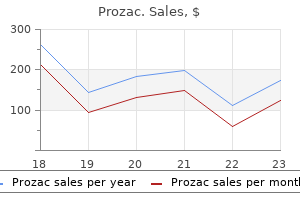
Order prozac with mastercard
Knowing before you get to auscultation that the left is the irregular facet makes interpretation unusually easy. Chest movements during respiration are finest appreciated by placing the hands precisely symmetrically on both side of the chest, with the thumbs parallel with one another in the midline. The relative movement of the 2 palms and the separation of the thumbs mirror the overall motion of the chest and any asymmetry between the 2 sides. The position of the mediastinum is assessed by finding the tracheal place and the cardiac apex beat. In airway obstruction, cautious statement will reveal the prolonged expiratory section to respiration. Pursed lips throughout expiration preserve a constructive back pressure, holding small airways open longer, reducing gasoline trapping and permitting patients with airway obstruction to obtain higher tidal ventilation at a extra comfy lung quantity. If, on observation, the entrance of the chest is seen to transfer upward on inspiration, hyperinflation (airway obstruction) is present. The arrows point out the course of movement in normal individuals and in those with airway obstruction (see text). The signal is most simply detected by putting the first and second fingers of every hand in the positions shown (on the costal margin within the positions approximating to the line of the lateral border of rectus abdominus). The place at which the trachea is first felt on the tip of the finger instantly informs you whether the trachea is central or deviated. This technique avoids the uncomfortable poking around that normally accompanies palpation of the trachea. Note the distance between the cricoid cartilage and the sternal notch (normally the width of three fingers). The apex beat is the most inferior and lateral point at which the cardiac impulse could be felt. The intercostal space by which the apex beat is felt ought to be counted down from the second intercostal space, which is just below the sternal angle, and its location also needs to be associated to landmarks such as the mid-clavicular or anterior axillary strains. It is generally positioned within the fifth left intercostal space in the mid-clavicular line. For instance, lobar collapse may pull the trachea to that facet, whereas a big pleural effusion or tension pneumothorax may push the trachea and apex beat away from it. The more than likely prognosis is: A pulmonary oedema B idiopathic pulmonary fibrosis C bronchiectasis D emphysema E lung cancer 2. On examination, there are decreased breath sounds over the proper hemithorax with hyper-resonance on percussion. He stopped smoking 10 years in the past, having previously smoked 20 cigarettes/day for 50 years. Pneumonia is sometimes related to inflammation of the overlying pleura, inflicting pleuritic pain. Together with a good history, scientific examination and a chest X-ray, these checks present a lot of the info needed for prognosis, quantification of severity and monitoring of disease. Simple tests of ventilatory perform Ventilation refers to the method of transferring air out and in of the lungs. Normal values Ventilatory efficiency varies tremendously with affected person peak, age and sex. If a medium-sized grownup has a vital capacity 750 ml beneath the anticipated value, this can be the end result of respiratory illness; then again, being only 1. The tidal quantity is the amount of air that enters and leaves the lungs during regular breathing. The volume of gas throughout the lungs on the end of a traditional expiration is the useful residual capability. It is a measurement of the quantity (volume) and/or pace (flow) of air that Respiratory Medicine Lecture Notes, Ninth Edition. Normally, throughout a forced expiratory manoeuvre, at least 70% of the air is expelled in the first second. Three of these are true maximal forced expirations, as indicated by their reproducibility. The fee of airflow is severely lowered, as indicated by the decreased slope of the curve. Note that the pressured expiratory time is increased: the patient remains to be blowing out at 5 seconds.
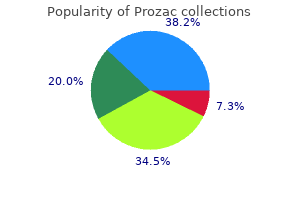
Discount generic prozac uk
Therefore, the immunity an individual has one yr may not defend in opposition to a unique strain that emerges the next yr. In the United States, solely about 60% of these age 65 and older have been vaccinated. Risk components embody having a weakened immune system, substance abuse, tobacco use, being a health care worker, and dwelling in a residential care facility. The micro organism are unfold via microscopic droplets released into the air when somebody with the untreated, lively type of tuberculosis coughs, speaks, sneezes, spits, laughs, or sings. Inhaled micro organism infect the lungs and induce a chronic inflammatory response that leads to necrosis or tissue dying. Lung tissue heals with fibrosis and calcification or scarring, walling off the bacteria into pockets for months or years. Vaccines are used in different nations the place the prevalence and risk is much greater. Signs and symptoms embody dyspnea, frequent coughing, wheezing, tachypnea, and tightness in the chest. The aim of a pulmonary rehabilitation program is to improve the quality of life for individuals with persistent respiratory problems. Pulmonary rehabilitation contains medical administration, train, studying new respiration methods, training, emotional assist, and nutritional counseling. Emphysema Emphysema is a long-term, progressive obstructive lung illness in which the alveoli that promote oxygen trade between the air and the bloodstream are destroyed. The threat elements for emphysema embody smoking, publicity to secondhand smoke, occupational publicity to mud and chemical compounds, and genetics (alpha-1-antitrypsin deficiency). In emphysema, the alveolar partitions break down, adjoining alveoli fuse, and the lungs lose their elasticity and floor space required for regular gaseous exchange. The airflow limitation is normally progressive and is related to an abnormal inflammatory response of the lungs to noxious particles or gases. Other indicators and symptoms might embody cyanosis, edema of the toes and ankles, fatigue, headache (especially in the morning), and wheezing. Emphysema patients could develop barrel chest attributable to enlargement of the lungs and chest wall and the ineffective use of respiration muscle tissue. As emphysema progresses, many sufferers experience dyspnea from the slightest exercise or even whereas sedentary. They often exhibit pursed-lip respiration or exhaling through puckered lips, which is a approach to make every breath simpler by tending to maintain the airways open in order that extra air may be exhaled. Patients may generally tend to lean ahead and help themselves with their arms on a floor in entrance of them or on their knees. This position can help make breathing simpler by permitting patients to use accessory breathing muscle tissue. Familial emphysema is inherited and entails a genetic deficiency of alpha-1-antitrypsin, which leaves the lungs vulnerable to alveolar destruction. The goals of therapy are to cut back symptoms and to slow progression of the disease. Treatment can also include bronchodilators, inhaled steroids, an alpha-1 protease inhibitor for patients with familial emphysema, supplemental oxygen, and surgery (lung discount to remove broken tissue or lung transplant). The handiest way to stop emphysema is to not smoke, keep away from exposure to secondhand smoke, and avoid occupational publicity to dust and chemical substances. Chronic bronchitis is defined as having a cough with sputum manufacturing that lasts a minimal of three months for two consecutive years. Over 10 million individuals in the United States are identified with chronic bronchitis every year. Risk components for chronic bronchitis embody tobacco use, exposure to secondhand tobacco smoke, exposure to irritants on the job, and decreased immunity. Over time, untreated persistent bronchitis results in scarring, destruction of cilia, and tissue death. Signs and symptoms of persistent bronchitis include mucus-producing cough, wheezing, fatigue, slight fever, chills, and chest discomfort. People exposed to industrial dusts and fumes within the office, such as coal miners, grain handlers, and metal molders, are additionally at high danger of growing the illness.
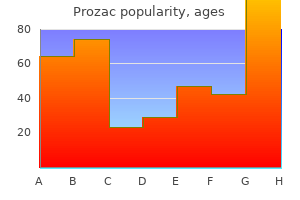
Diseases
- Hepatic cystic hamartoma
- Alpha-L-iduronidase deficiency
- Cytomegalovirus
- McDonough syndrome
- Complement component 2 deficiency
- Chromosome 20 ring
- Oculo cerebro acral syndrome
- Waardenburg anophthalmia syndrome
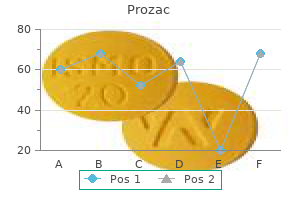
Discount prozac american express
Topical agents are efficient for skin infections, corresponding to infections of nails or ringworm, and pose fewer antagonistic effects. A systemic an infection, nevertheless, requires systemic treatment, which entails the danger of great unwanted effects. Protozoa are treated with medication that intrude with protein synthesis and metabolism. Helminths are prone to medication that paralyze their muscular tissues or intrude with their metabolism. Although effective therapies have been discovered and used for many necessary infections, sure issues stay. One complication is that resistant microorganisms can evolve, rendering existing treatments useless. Another problem is that some therapies are accompanied by unacceptable toxic unwanted aspect effects or allergy symptoms. For these causes, preventive measures are the only option for long-term management of certain illnesses. Aidan Cockburn wrote within the Evolution and Eradication of Infectious Diseases, "We can look ahead with confidence to a considerable diploma of freedom from infectious ailments at a time not too far in the future. Since the Nineteen Seventies, newly emerging illnesses have been recognized at the unprecedented rate of a quantity of per year. Emerging infectious ailments embrace outbreaks of beforehand unknown illnesses or identified diseases whose incidence in humans has considerably increased in the past twenty years. Reemerging infectious diseases are recognized diseases that have reappeared after a major decline in incidence. Human demographics and behavior, expertise and trade, economic development and land use, international journey and commerce, microbial adaptation and change, breakdown of public health measures, and climate change can play a role within the emergence or reemergence of infectious ailments. As talked about, human habits (failing to vaccinate, for example) can play a role within the reemergence of infectious illnesses. The primary purpose for persevering with excessive childhood measles morbidity and mortality is the failure to ship no less than one dose of measles vaccine to all infants. Because immunization controls most critical infectious illnesses within the United States, many parents no longer concern the vaccinepreventable diseases. For example, in 1991 a group of fogeys in Philadelphia selected not to immunize their children. Their youngsters grew to become the source of an outbreak of measles that claimed at least eight lives and sickened more than seven hundred people, mostly youngsters. Climate modifications can alter the breeding ranges of arthropod vectors such as mosquitoes and flies. Malaria, Dengue fever, and yellow fever, all mosquito-borne infections, show sensitivity to climate. Even in areas the place malaria is endemic, it happens with much less frequency in higher and cooler elevations. Then as city centers grew, human and deer populations inevitably got here in touch with more frequency, giving the Lyme disease ticks ample opportunity to connect to people and their pets. Emerging antimicrobial resistance demonstrates the potential of microbial adaptation. Common Vaccine-Preventable Childhood Infectious Diseases Vaccine-preventable childhood infectious illness ranges are at or close to document lows in the United States. Grayish spots, referred to as Koplik spots, usually develop contained in the mouth earlier than the rash seems. Mumps is brought on by the paramyxovirus and is spread by contact with respiratory secretions or saliva or by way of fomites. Mumps might start with a fever of as a lot as 103�F in addition to a headache and loss of appetite. The hallmark of mumps is swelling and ache within the parotid glands, the biggest of the salivary glands. Mumps in adolescent and adult males can also outcome within the development of orchitis, an irritation of the testicles. The rubella virus is highly contagious and is spread by respiratory droplets, by airborne transmission, and can also be transmitted from pregnant ladies to their fetus. When rubella occurs in a pregnant lady, it may trigger congenital rubella syndrome, with potentially devastating consequences for the growing fetus. Some rubella sufferers develop a rash that appears as either pink or light red spots, which can merge to kind evenly colored patches.
Purchase prozac no prescription
Renal cell carcinoma in sufferers with end-stage renal disease: Relationship between histological kind and period of dialysis. Immunohistochemical and molecular genetic profiling of acquired cystic disease-associated renal cell carcinoma. Acquired cystic disease-associated renal cell carcinoma with gain of chromosomes three, 7, and sixteen, acquire of chromosome X, and lack of chromosome Y. High-density mapping of chromosomal arm 1q in renal amassing duct carcinoma: Region of minimal deletion at 1q32. Sarcomatoid amassing duct carcinoma: A clinicopathologic and immunohistochemical research of 5 instances. Collecting duct carcinoma of the kidney: An immunohistochemical analysis of the usage of antibodies for differential prognosis. Renal medullary carcinoma: Prolonged remission with chemotherapy, immunohistochemical characterisation and evidence of bcr/abl rearrangement. Gene expression profiling of renal medullary carcinoma: Potential scientific relevance. Cancer as a marker of genetic medical illness: An unusual case of medullary carcinoma of the kidney. Low-grade tubular-mucinous renal neoplasms: Morphologic, immunohistochemical, and genetic options. Spindle and cuboidal renal cell carcinoma, a tumour having frequent affiliation with nephrolithiasis: Report of eleven cases together with a case with hybrid standard renal cell carcinoma/spindle and cuboidal renal cell carcinoma elements. Mucinous tubular and spindle cell carcinoma: A report of 15 circumstances and a evaluate of the literature. Expanding the histologic spectrum of mucinous tubular and spindle cell carcinoma of the kidney. Mucinous tubular and spindle cell carcinoma with aggressive histomorphology�a sarcomatoid variant. Mucinous tubular and spindle cell carcinoma of the kidney with sarcomatoid change. Incidence of cutaneous sebaceous carcinoma and risk of associated neoplasms: Insight into Muir-Torre syndrome. Independent predictors of cancer-specific survival in transitional cell carcinoma of the higher urinary tract: Multi-institutional dataset from three European centers. Neoplasms of the higher urinary tract: A evaluate with give attention to urothelial carcinoma of the pelvicalyceal system and aspects associated to its analysis and reporting. The influence of tumor multifocality on outcomes in sufferers treated with radical nephroureterectomy. Intraductal tumor involvement and renal parenchymal invasion of transitional cell carcinoma within the renal pelvis. Upper urinary tract tumors with nontransitional histology: A single-center expertise. Squamous cell carcinoma of the renal pelvis and ureter: Incidence, symptoms, remedy and end result. Small cell carcinoma of the renal pelvis and ureter: Clinicopathologic and immunohistochemical options. High-grade urothelial carcinoma of the renal pelvis: Clinicopathologic examine of 108 instances with emphasis on uncommon morphologic variants. Transitional cell carcinoma of the renal pelvis with choriocarcinomatous differentiation. Immunohistochemical and immunoelectron microscopic assessment of human chorionic gonadotropin manufacturing by transitional cell carcinoma of the urinary bladder. European pointers for the analysis and management of upper urinary tract urothelial cell carcinomas: 2011 update. Unclassified renal cell carcinoma: Clinical features and prognostic impression of a new histological subtype. Primary renal carcinoid tumors: Clinicopathologic options of 9 cases with emphasis on novel immunohistochemical findings.
Discount 60mg prozac
In some research, hypocomplementemia supplied further proof of an immune reaction (102). There have been several stories of acute oliguric renal failure during intermittent rifampicin remedy (115�118). The common time between the initiation of therapy and scientific presentation is lower than 3 weeks (119). Most patients get well when the drug is withdrawn (116), a quantity of circumstances have been reported to lead to permanent renal injury (119,120). Pathology Renal biopsies in circumstances of rifampicin toxicity usually show interstitial edema with variable numbers of mononuclear cells, and eosinophils have additionally been found (64). Even patchy cortical necrosis has been described (120); in that case, there was residual renal dysfunction. However, the diploma of tubular necrosis is usually not severe, and in one case, the tubules were described as unaffected (115). Although glomeruli and vessels are often regular, rarely glomerulonephritis, together with crescentic and necrotizing glomerulonephritis, has been famous (64,116). Pathogenesis Antibodies to rifampicin have been detected in sufferers (123,124); in a single research, they have been present in one third of forty nine sufferers (123). The various adverse reactions reported in this series, including renal dysfunction, have been discovered more generally in sufferers with antibodies than in sufferers with out them. These authors counsel that the drug acts as a hapten, which, after it has become bound to macromolecules in the plasma, becomes antigenic with the formation of antibodies. The antibodies are thought-about to be directed against the drug, with formation of hapten-antibody complexes when the drug is given once more. In one case, acute oliguric renal failure developed in a affected person being handled with sulfadiazine. Cotrimoxazole (sulfamethoxazole and trimethoprim) has occasionally been found to trigger deterioration of renal operate (129,130). Patients in whom crystalline precipitates develop with using sulfonamides have microscopic or gross hematuria, crystalluria, and renal colic, and in some cases, they turn into oliguric or anuric (108,132). In one series of forty patients, the urinary bladder was the commonest location of stones (133). Sulfasalazine (a mixture of 5-amino salicylic acid and sulfapyridine) has been reported to cause obstructive uropathy secondary to calculi (134). Less soluble varieties, including sulfapyridine, sulfathiazole, and sulfadiazine, are most regularly associated with crystalline obstruction (135). Fortunately, this complication grew to become rarer when sulfonamides of larger solubility grew to become out there. Rapid enchancment may happen with discontinuation of the drug, fluid administration, and alkalinization of the urine. In patients with crystallization of sulfonamide in the kidney, some pathologic adjustments are due to obstruction as a consequence of crystal formation. Nephrotoxicity is a identified complication of the drugs when given alone or together with other medication, particularly aminoglycosides (140,141) or cephalosporins (74). Some sufferers have an related rash and eosinophilia, suggesting a hypersensitivity response. In addition to these adverse renal effects, in some instances, patients have an anaphylactoid reaction to the drug, with generalized flushing-the so-called red man syndrome. Rarely, vancomycin-associated kidney damage may be manifest as granulomatous interstitial nephritis (139). Most of those sufferers had excessive vancomycin trough levels and underlying preexisting continual renal damage. In these cases, the lesions are usually reversible until sufferers have extreme systemic illness, sepsis, or different prominent persistent renal damage similar to diabetic nephropathy. The potentiation of toxic reactions when vancomycin is used with aminoglycosides could additionally be due, at least partly, to enhancement of aminoglycoside binding to brush border and, presumably, its uptake into tubular cells, with subsequent mobile harm (148).
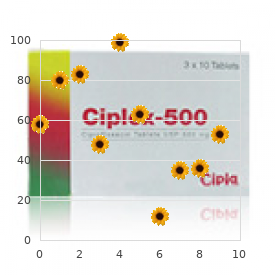
Order 40 mg prozac with mastercard
The cellular infiltrate tends to be clustered around necrotic and ruptured segments of tubules or the place Tamm-Horsfall protein has been extruded, forming small granulomas. Injured cells have indifferent from websites in proximal nephron and mixture into casts, usually around a protein core. It is feasible to detect the nuclear and cytoplasmic condensation of cells undergoing apoptosis by gentle microscopy. Apoptotic bodies, representing membranebound nuclear fragments, can also be detected in adjacent tubular cells, which have engulfed these cell remnants. The cellular lesions are most prominent within the S3 phase of the proximal tubule and have a tendency to be extra uniform in character. Apical blebbing may be the solely discovering in milder forms, whereas the more severe cases additionally present focal necrosis with rupture of the tubular basement membrane. The cell has separated from the basement membrane however remains to be adherent to the adjacent epithelial cell by way of the cell-to-cell junctions. Lymphocytes are predominant in the first 24 to 48 hours, followed later by immature cells of the myeloid sequence and eventually by nucleated pink cells and pink cell precursors. The countercurrent nature of blood flow within the vasa recta would lead to dilution of cellular components as blood flows towards the hairpin flip, resulting in a concentration of mobile parts on the proximal end of the vasa recta vasculature within the outer medulla. There can also be some proof that up-regulation of adhesion molecules on ischemic endothelium results in accumulation of leukocytes within the microvasculature, which can contribute to stasis and lack of reflow in ischemia-reperfusion injury (see section "The Inflammatory Response in Ischemic Injury"). Other potential injury markers in tissues are described under in the section on "Pathophysiology. However, a range of morphologic modifications may be seen in the renal tubules as the outcomes of toxic harm. The extent and severity of the adjustments will differ depending on the agent, the dose, and the timing of the morphologic assessment. Intracellular inclusions are sometimes seen in renal tubular cells uncovered to medication. Giant mitochondria, showing as shiny eosinophilic inclusions, have been described after the administration of relatively excessive doses of CsA to humans. Calcification of tubular cells has been described in instances of extreme toxicity brought on by amphotericin or bacitracin (205). Extensive coagulative necrosis of tubular cells has been seen in circumstances of poisoning by heavy metals corresponding to mercuric chloride, not often seen right now, or in cases of poisoning as a result of chemicals corresponding to diethylene glycol (206). It is obvious that both necrosis and apoptosis happen in toxic nephropathies in experimental models as properly as in medical tubular harm (208,209). In vitro research have documented apoptosis in cell culture on publicity to nephrotoxins. Our understanding of the position of apoptosis within the pathogenesis of poisonous renal damage has advanced over the previous decade. Taurine is one of the natural osmolytes, which have important antiapoptotic properties within the kidney (214). The antiapoptotic function of organic osmolytes in kidney cells is mediated through suppression of efflux of proapoptotic molecules, such as cytochrome c, from the mitochondria. Tubular casts, which can embrace cells and cell particles, are frequently seen with toxic tubular harm. In addition, tubular crystalline deposits are found in cases of renal toxicity produced by nephrotoxins. Anesthetic agents, together with methoxyflurane and halothane, and antiretroviral agents such as indinavir might produce tubular crystalline deposits. Mechanical obstruction can also end result from deposition of intratubular crystals in sufferers handled with sulfonamides or acyclovir. In addition, radiocontrast agents are uricosuric and oxaluric, and casts and birefringent crystals have been identified following administration of those brokers. Uric acid lithiasis with tubular obstruction has been reported with phenylbutazone (215). Finally, pigmented casts could end result from hemolysis in uncommon instances of fulminant drug reactions and with the rhabdomyolysis brought on by cocaine.
References
- Newgard CD, Schmicker RH, Hedges JR, et al. Emergency Medical Services Intervals and Survival in Trauma: assessment of the iGolden Houri in a North American Prospective. Ann Emerg Med. 2010;55(3):235.
- Sarode R, Milling TJ Jr, Refaai MA, et al. Efficacy and safety of a 4-factor prothrombin complex concentrate in patients on vitamin K antagonists presenting with major bleeding: A randomized, plasma-controlled, phase IIIb study. Circulation 2013; 128:1234-43.
- Kaufman DS, Shipley WU, Feldman AS: Bladder cancer, Lancet 374(9685):239n 249, 2009. Kaufman DS, Winter KA, Shipley WU, et al: A phase I/II RTOG study (99-06) in patients with muscle-invading bladder cancer of transurethral surgery plus paclitaxel, cisplatin and twice daily irradiation followed by either selective bladder preservation or radical cystectomy and adjuvant chemotherapy, Urology 73:833n837, 2009. Kefer JC, Campbell SC: Current status of prostate-sparing cystectomy, Urol Oncol 26(5):486n493, 2008.
- Land MH, Rouster-Stevens K, Woods CR, et al. Lactobacillus sepsis associated with probiotic therapy. Pediatrics 2005;115(1):178-181.
- Walter RB, Buckley SA, Pagel JM, et al. Significance of minimal residual disease before myeloablative allogeneic hematopoietic cell transplantation for AML in first and second complete remission. Blood. 2013;122(10):1813-1821.
- Woodman SE, Davies MA. Targeting KIT in melanoma: a paradigm of molecular medicine and targeted therapeutics. Biochem Pharmacol 2010;80(5):568-574.
- Lipan MJ, Reidenberg JS, Laitman JT. Anatomy of reflux: A growing health problem affecting structures of the head and neck. Anat Rec B New Anat 2006; 289: 261-270.






